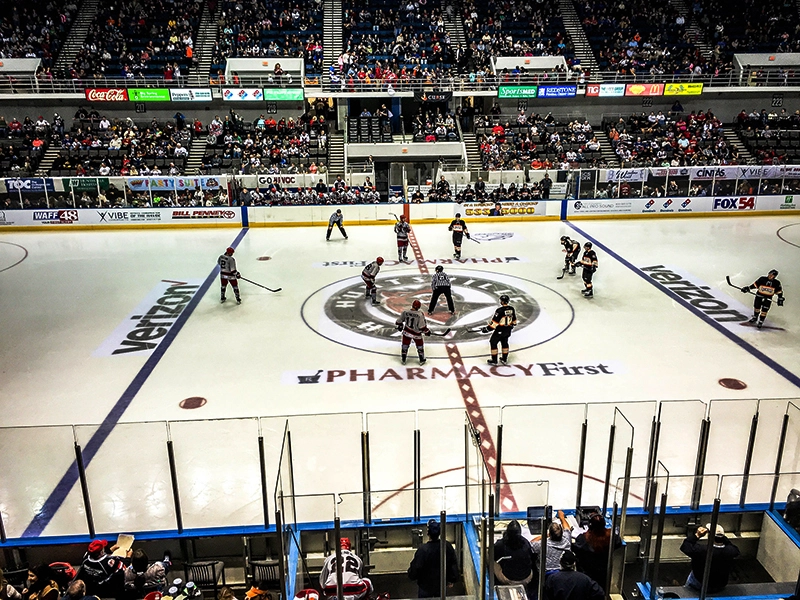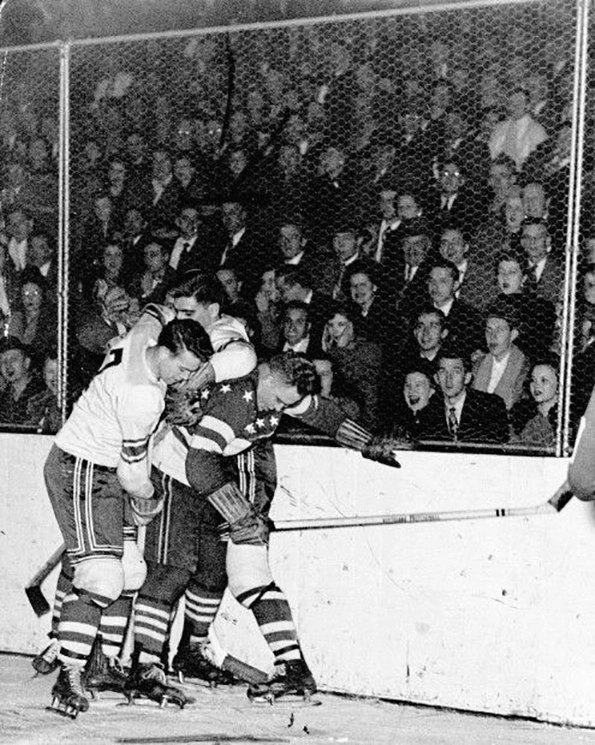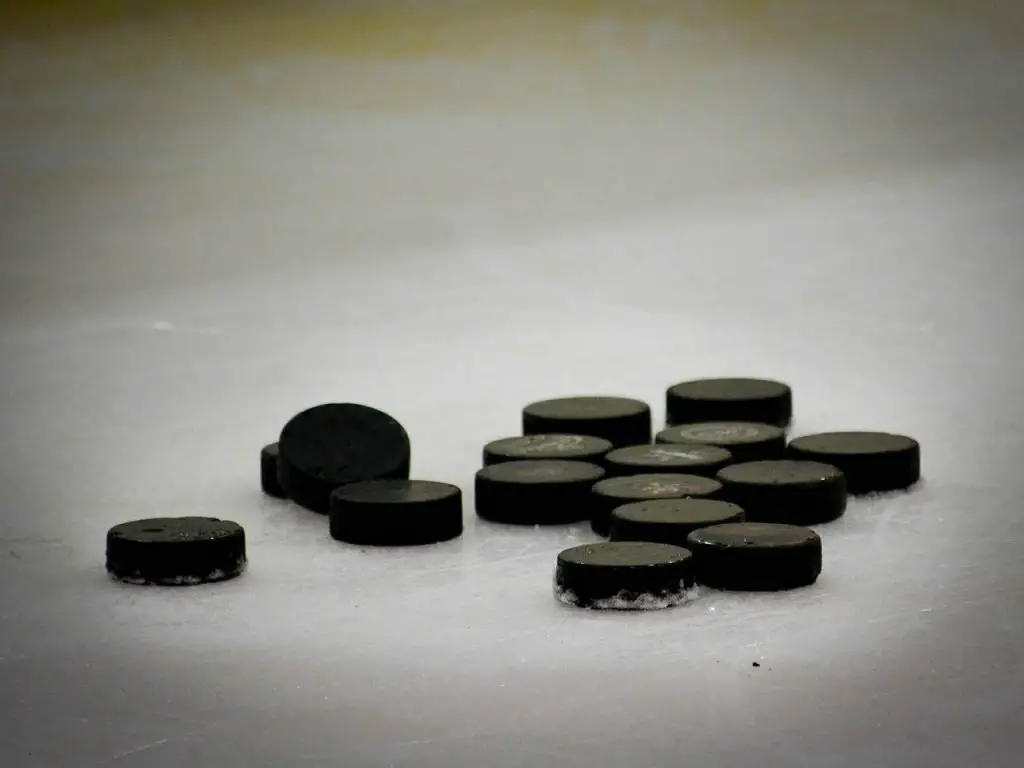Have you ever been to a hockey rink and had a puck fly right towards you only to be stopped by the glass, without it shattering?
It’s happened numerous times to me, and it’s got me wondering what exactly is hockey glass made of that prevents it from breaking so often?
Let’s take a look!
Table of Contents
What is hockey glass made of?
Hockey glass is not made from glass at all. The glass you see at hockey arenas is plexiglass. Plexiglass used in hockey rinks is created using layers of acrylic plastic sheets, which contribute to its superior strength and shatter-resistance, while also providing more give when a player is checked into the boards.
Hockey rinks around the world opt to use plexiglass for their boards, as it’s much safer and more durable than seamless tempered glass.
Although plexiglass will eventually break from time to time, it’s strong enough to withstand hundreds of slap shots at speeds of 100mph. Whereas regular seamless tempered glass would break far more often.

How thick is the glass in a hockey rink?
Glass in a hockey rink is typically between 1/2″ and 5/8″ thick. It’s also 8 feet tall.
Why is there glass at hockey games?
In hockey rinks, glass is used to keep the puck in play. If there was no glass, the puck would frequently fly out of play and a hockey game would last much longer.
Another reason glass is used at hockey games is to protect the fans from being hit with pucks and or errant sticks.
History of hockey rink glass

Chicken Wire
Before glass was ever even used in hockey arenas around the world, chicken wire was widely used.
In fact, it wasn’t until the 1940s when rinks started switching to “glass” as we know it today.
The problem with chicken wire was that it wasn’t the best for providing fans with an optimal viewing experience. Sometimes, fans would even use their hatpins to poke players through the chicken wire! Ouch!
Seamless Tempered Glass
There have been a few iterations of glass used by hockey rinks throughout the years, but following chicken wire the most commonly used type of glass in hockey rinks was seamless tempered glass.
Seamless glass was so popular because not only was it super strong, but it also removed the need for metal dividers that we see separating sections of glass in rinks today, leading to a better viewing experience for fans. Hence, the name “seamless”.
Not everyone was a fan of this glass, however. Most notably the players, who said getting hit against it was like getting hit against a brick wall. Some believe that this type of glass even lead to an increase in injuries.
Don cherry, who hosted hockey night for a number of years, was definitely not a fan of it.
Plexiglass
Before the 2011-12 NHL season, all NHL teams that still used seamless tempered glass were mandated to make the switch to plexiglass.
Today all NHL arenas, and most arenas around the world, have transferred over to using plexiglass for their boards.
Not only is plexiglass shatter-resistant and durable, it also provides a lot of give, so when a player gets drilled in the boards they aren’t getting injured nearly as often.
Unfortunately, it’s not uncommon to see the old style seamless tempered glass being used in local arenas due to the simple fact that they are unable to afford the cost of replacing it.
But eventually, all glass in hockey rinks will be plexiglass.
How often does the glass at hockey games break?
Before the introduction of plexiglass, the glass at hockey games used to break quite frequently.
The older seamless tempered glass would shatter into a million pieces when players were checked with enough force into the glass or if they were hit by a really hard shot.
Today, if you watch NHL games, you will rarely see the glass on the boards break.
When it does, the plexiglass cracks or pops out of the metal supports holding it rather than shattering, which is safer for the players and fans.
I’ll be honest, I miss the days of glass shattering from huge hits. But ultimately, safety does come first.


